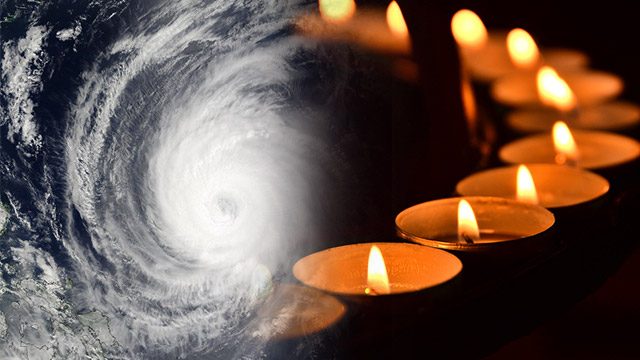SUMMARY
This is AI generated summarization, which may have errors. For context, always refer to the full article.

MANILA, Philippines – Holy Week in the Philippines, which usually falls on a fair-weathered summer week, gives Filipinos the chance to reflect, rest, and be with their families.
This year’s Holy Week, however, may not be as solemn as the previous ones, as Typhoon Chedeng (Maysak) entered the Philippine Area of Responsibility (PAR) on Holy Wednesday, April 1, and is expected to bring rains in Luzon in the following days.
March and April – when the Holy Week usually falls – are among the months least visited by storms. Since 1948, these months have been witness to 20 and 32 storms, respectively, that entered the country. (READ: How frequent are storms in PH in March?)
In the past 67 years, there has only been 10 times, including this year’s typhoon, when a storm entered the PAR during the Holy Week. The last time a storm was recorded during Holy Week was 11 years ago, when Typhoon Cosme entered the PAR on April 10. (READ: How rare are April storms in the Philippines)
Here’s a list of the other rainy Holy Weeks in Philippine history:
1956 (March 25-April 1)
- Typhoon Sarah – March 28-April 4
- with maximum wind speed of 32 km/h in Legaspi, Albay
- curved back into the Pacific Ocean
1957 (April 14-21)
- Typhoon Shirley – April 12-17
- with maximum wind speed of 185 km/h over water
- dissipated off the eastern coast of Northern Luzon and therefore, did not affect the weather in the country
1961 (March 26-April 2)
- Typhoon Tess – March 29-30
- with maximum wind speed of 231 km/h over water
- skirted eastern fringe of the PAR
1966 (April 3-10)
- Typhoon Atang (Hester) – April 8-15
- with maximum wind speed of 155 km/h over water
- caused some occasional rains over the northeast coasts of Luzon and Batanes, and occasional gusts in Laoag, Ilocos Norte
1976 (April 11-18)
- Typhoon Konsing (Marie) – April 7-13
- with maximum wind speed of 56 km/h in Virac
- no landfall but affected the Bicol region and the Visayas
1979 (April 8-15)
- Typhoon Bebeng – April 12-20
- with maximum wind speed of 180 km/h in Recon and Tacloban; passed through Tacloban, Leyte, Masbate, and Romblon; curved then passed through southern Quezon and Camarines Norte.
- 30 dead; 63 missing, 73 injured; P267,188,074 in damage
1996 (March 31 – April 7)
- Tropical Storm Biring – April 5-9
- with maximum wind speed of 65 km/h, it affected Regions V, VI, and VIII
2003 (April 13-20)
- Typhoon Amang (Kujira) – April 16-24
- with maximum wind speed of 112 km/h over Basco and 56 km/h over water
- almost crossed Batanes then curved to the northern border of the PAR
2004 (April 4-11)
- Typhoon Cosme (Sudal) – April 10-14
- maximum strength of 185 km/h, it entered the PAR from a northwest direction then curved and moved away from the country
According to PAGASA senior forecaster Vic Manalo, storms in the country are still possible even during the dry season. However, the chances of these storms hitting are still low because of the northeast monsoon (amihan) and low sea surface temperature during this time of the year.
Now, do you remember spending your past Holy Week with rain? – Rappler.com
Sources: Tropical Cyclones that entered PAR from 1948-2014 from PAGASA and www.timeanddate.com
Candles image via Shutterstock
Add a comment
How does this make you feel?
There are no comments yet. Add your comment to start the conversation.